by Mike Weis, KAWO member and owner of Dropseed! Native Gardens
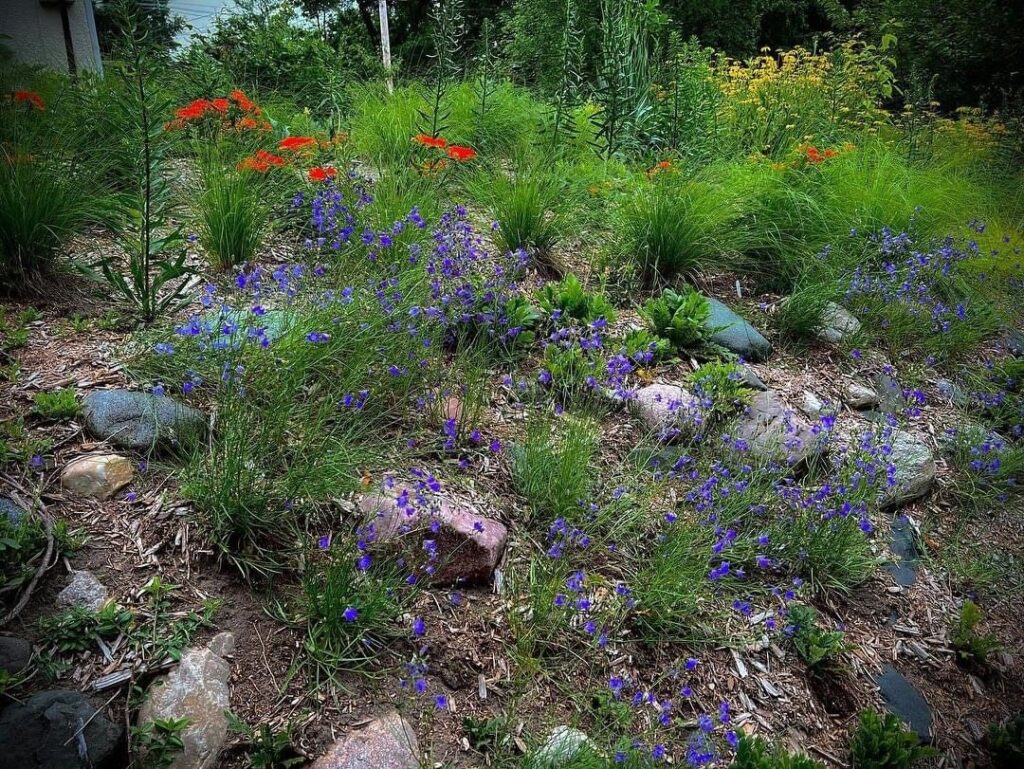
Here in Kalamazoo county, most of our landscape is the product of outwash from glacier activity over 10,000 years ago. (Warning: armchair geology lesson from a fool) Essentially, a confluence of glacial moraine Lobes, Sublobes and Interlobes of the enormous Laurentide Ice Sheet pushed and receded through our area, forming our landscape into rolling hills, ravines, kettles, and kames. These undulating dips and swells were constructed from the detritus of the violent movement of those monstrous bulldozers of ice! As a result, a lot of the soil in our area is awash in this glacial debris: Sandy loam or loamy sand with occasional gravel. This type of loosely textured soil allows for moisture to pass through it quickly.
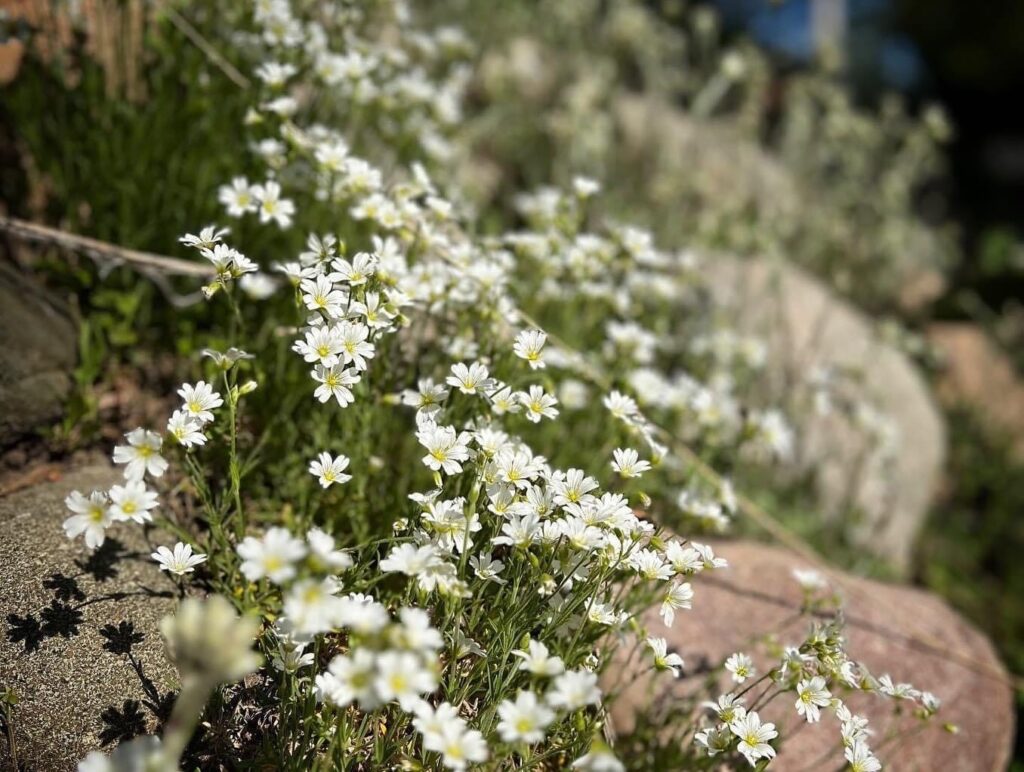
Check out an excavation construction site the next time you’re walking your dog around town. You’ll undoubtedly witness a few inches (or maybe even a foot or so) of slightly dark organic material followed by pale orange(ish)/tan sand as far down as you can peek into the hole. Some people (ahem, conventional gardeners) would call this kind of soil “poor,” meaning it is not nutrient-rich enough to grow conventional garden plants or a bounty of vegetables. They would advise us to fix it by amending our poor soil with compost to make it rich. I say, “Nevermind the Bollocks!” Rule number one in ecological gardening—match the plant list to the conditions, not the other way around.
There is a natural community for every soil type with a plant list to choose from. Check out the plant finder tool on the Hidden Savanna website and plug in “dry,” “full sun,” and “wildflowers,” and 82 options pop up. And that’s just forbs, not graminoids or woodies. The benefit to gardening with dry, well-drained conditions is that the plants tend to grow shorter, the weed pressure isn’t as intense as it is with richer soils and the dreaded “wildflower flop” is less of an issue (especially if you strategically plant densely).
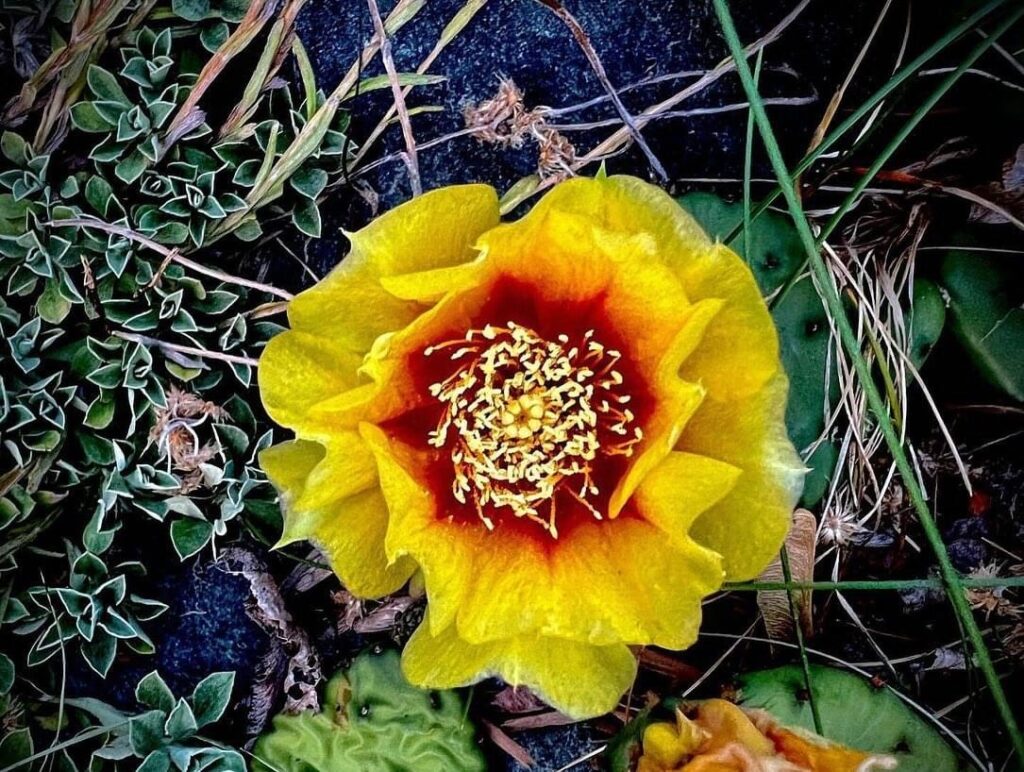
Because of our sexy morainal curves, many yards have the advantage of landscaping on slopes. Some might argue that this is a limiting factor but it’s only a problem if you’re trying to mow lawn. A slope is a great way to show off really rare, diminutive plants that would otherwise get lost or can’t survive competition from taller plants. Don’t let anyone tell you that you need to flatten your slope by “tiering” it; that’s just another excessive alteration of the land. A steep slope, especially one with rocks and boulders, is a gift for botany nerds!
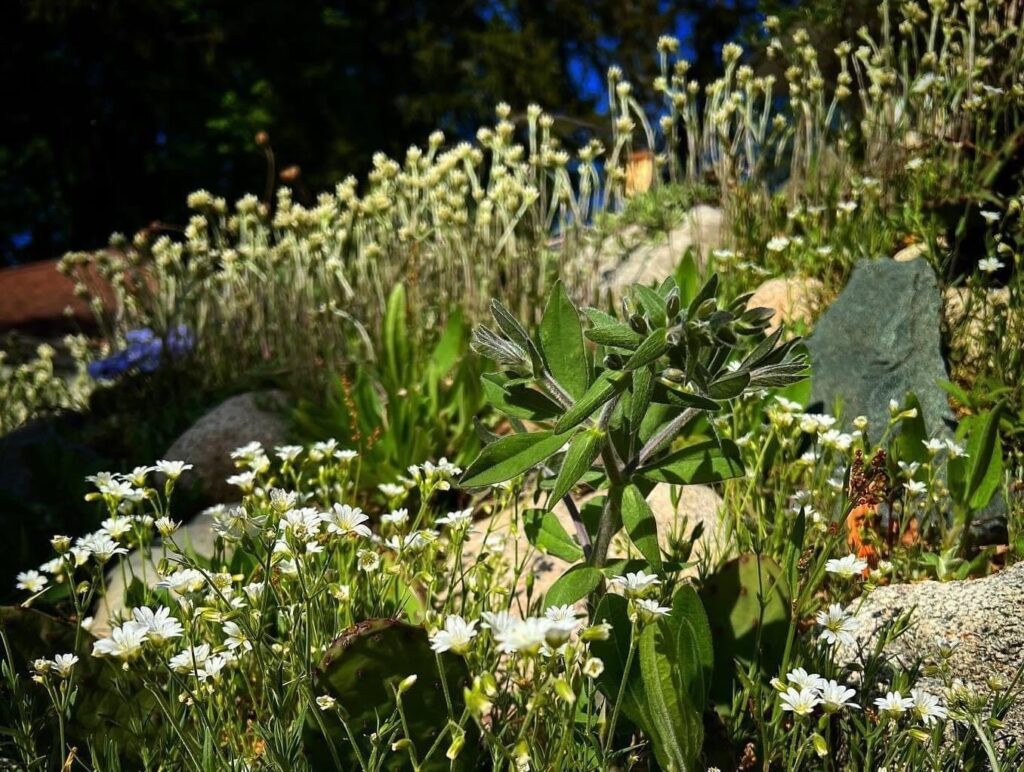
Pop into those crevices special species, what I call “boutique plants,” to give them front row attention. Here are some ideas for full sun, dry slopes—Prairie Violet, Field Chickweed, Prickly Pear Cactus, Field Pussytoes, Prairie Smoke, Bird’s Foot Violet, Cream Wild Indigo, Harebell, Puccoons, Pasque Flower, Prairie Gentian, Shooting Star, Goat’s Rue, Blue-Eyed Grass, Dotted Horsemint, Upland White Goldenrod, Hairy Beardtongue, Silky Aster, Flax-leaved Aster, Downy Woodmint, Robin’s Plantain, Dwarf Blazingstar, Prairie Phlox, Ivory Sedge, Poverty Oats Grass, Black Oat Grass, and Junegrass.
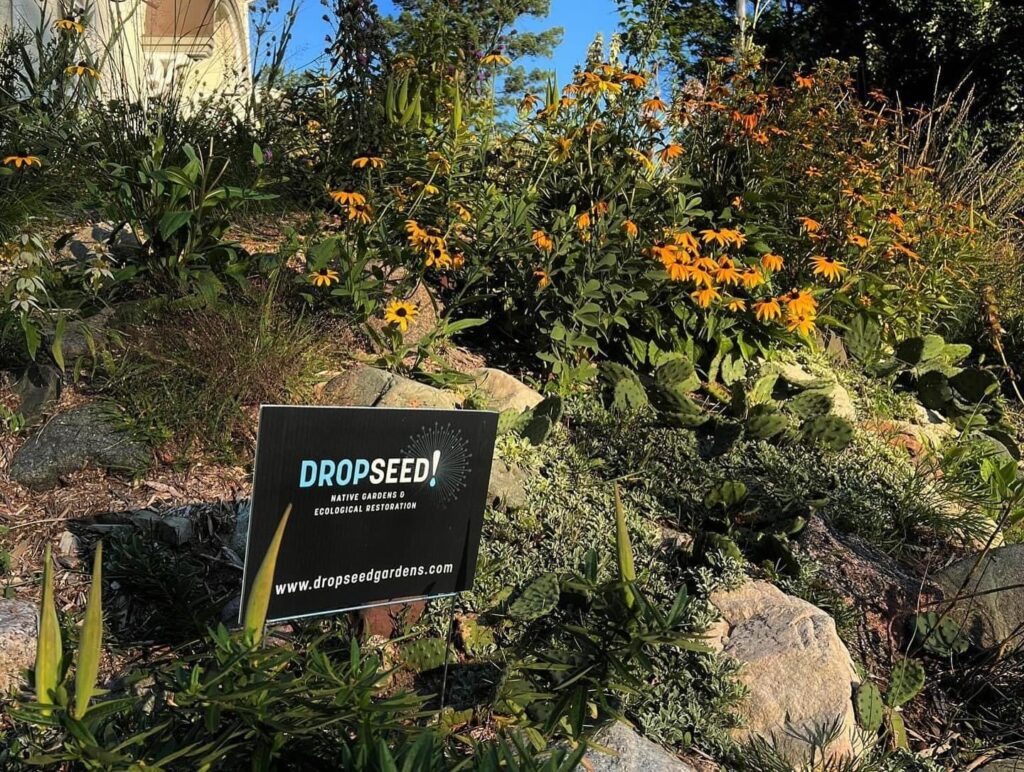
These plants will also stabilize the loose soil to prevent erosion. However, if erosion is a major issue it’s best to establish a higher percentage of graminoids with dense fibrous root systems. In addition to those mentioned above, consider Prairie Dropseed, Sideoats Grama, Purple Lovegrass, and Little Bluestem. If you need urgent support plant early succession fibrous forbs like Lanceleaf Coreopsis, Black-eyed Susan, and Dotted Horsemint.
